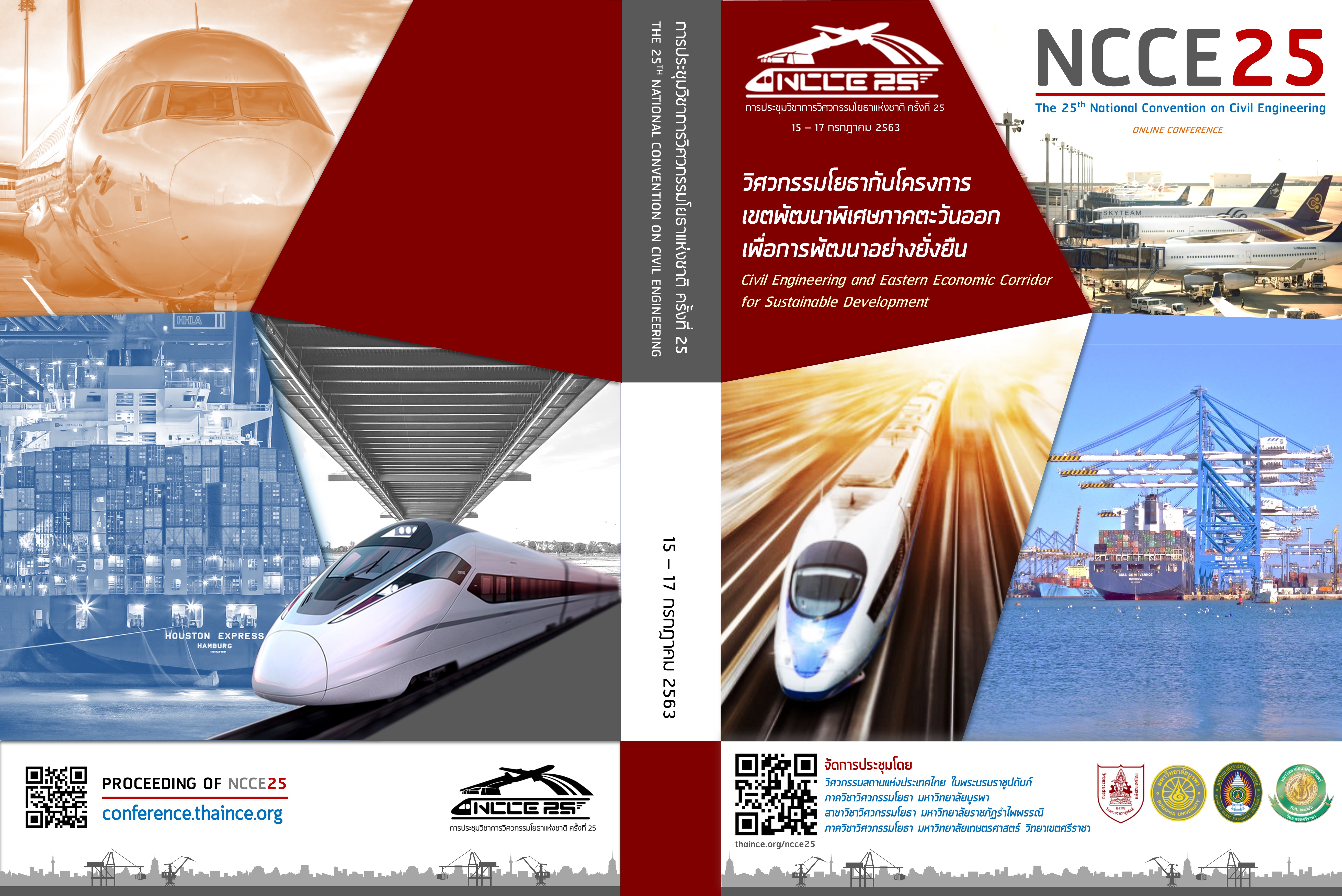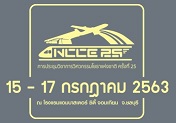Two-Dimensional Flow Characteristics through Soil and Flow Net from Physical Model Tests
Keywords:
Flow, Equipotential, Flow line, Flow net, Physical modelAbstract
Seepage through soil in the field is usually two-dimensional. In order to determine the discharge and pore water pressure for the two-dimensional flow, it is common to construct a flow net first. This research developed two scaled-down physical models, which are 1) sheet pile for an excavation work and 2) dike, for studying of two-dimensional flow of water through soil and developing the flow net. The modelled two-dimensional flow was under steady state condition. In the test, the water level at the downstream side was kept constant, while the one at the upstream side was varied so that the discharge and pore water pressure are different. A number of open-standpipes were used to read the pore water pressure (u) at various locations in soil. The recorded u values were analyzed with a computer program to develop a contour of head, and thus the equipotential. Besides, the colored water was used to determine the flow line from the experiment. By combining the equipotential and flow line obtained as the above, the flow net was developed. Then, the discharge was calculated from the experimentally obtained flow net. By comparing the results with the ones analyzed by SEEP/W program, it was found that all the outcomes, i.e., 1) equipotential; 2) flow line; 3) flow net; and 4) discharge, are very similar. Thus, the two physical models developed in this research and the experimental results can be used as an educational media for students in the undergraduate level.
Downloads
Downloads
Published
How to Cite
Issue
Section
License
บทความทั้งหมดที่ได้รับการคัดเลือกให้นำเสนอผลงานในการประชุมวิชาการวิศวกรรมโยธาแห่งชาติ ครั้งที่ 25 นี้ เป็นลิขสิทธิ์ของ วิศวกรรมสถานแห่งประเทศไทย ในพระบรมราชูปถัมภ์



